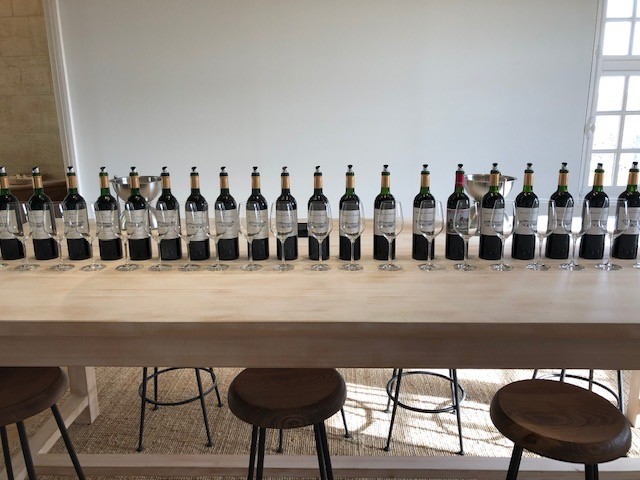
This beautiful estate located in the heart of Margaux covers 72 hectares just to the west of the Gironde, south of the village of Margaux. The terroir spans from the more limestone soils closer to the Gironde all the way to slightly more sandy soils further inland, yet the heart of the estate lies on the deep, brown, gravelly soils known as Terrace 4, located just to the west of Issan, in sight of the picturesque pillars of Château Palmer. The estate is planted to a mix of 62% Cabernet Sauvignon, 36% Merlot, and 1% each of Petit Verdot and Cabernet Franc, with vine density ranging from roughly 6,666 to 10,000 vines per hectare. The average vine age is a healthy 37 years.
Property of the Rauzan Family since 1661, the estate was purchased by the luxury brand, Chanel, in 1994. Chanel quickly brought on John Kolasa, previously at Château Latour, to renovate the estate, and John was responsible for increasing the number of vats, dramatically expanding and modernizing the cellar, and purchasing new winemaking equipment as well as installing a permanent bottling line. These all directly contribute to the quality and consistency of the wines today. Kolasa was succeeded by Nicolas Audebert in 2015. Audebert, who is also responsible for Château Canon on the Right Bank, is joined by cellar master Henry de Ruffray as well as consultant Eric Boissenot. Unquestionably this team is firing on all cylinders.
As for the wines, harvest is completely by hand, and the grapes are table sorted (no optical sort) and moved by gravity to truncated, stainless steel fermenters. As with numerous top estates today, they’ve broken their vineyards down into individual parcels based on terroir and variety, and the estate has numerous and varying size tanks, which gives them incredible flexibility with regard to fermentations. Today they favor cooler ferments, which span 20-24 days depending on the variety. Aging occurs in 65% new barrels (coopers include Sylvain, Saint-Martin, Darnajou, Taransaud, Nadalié, Demptos and Quintessence) with the balance in once-used oak and generally runs 18 months.
This retrospective looks at vintages from 1994 to 2017, and while it’s easy to see improvements over this time period, with the wines showing more and more precision and purity, the style of the wines remains relatively constant. This terroir produces a wine of elegance and complexity as opposed to pure power and richness. This is classic Margaux. In addition, none of the wines, even the more challenging 1994 and 1997, were excessively tired or over the hill. The young vintages also offered incredible pleasure, with polished, sweet tannins and beautiful fruit. Clearly, these wines have very broad drink windows. As I hope the reviews on the 2010, 2015, and 2016 (as well as the 2018) show, Château Rauzan-Ségla is firmly in the top tier of producers in the Médoc today.
